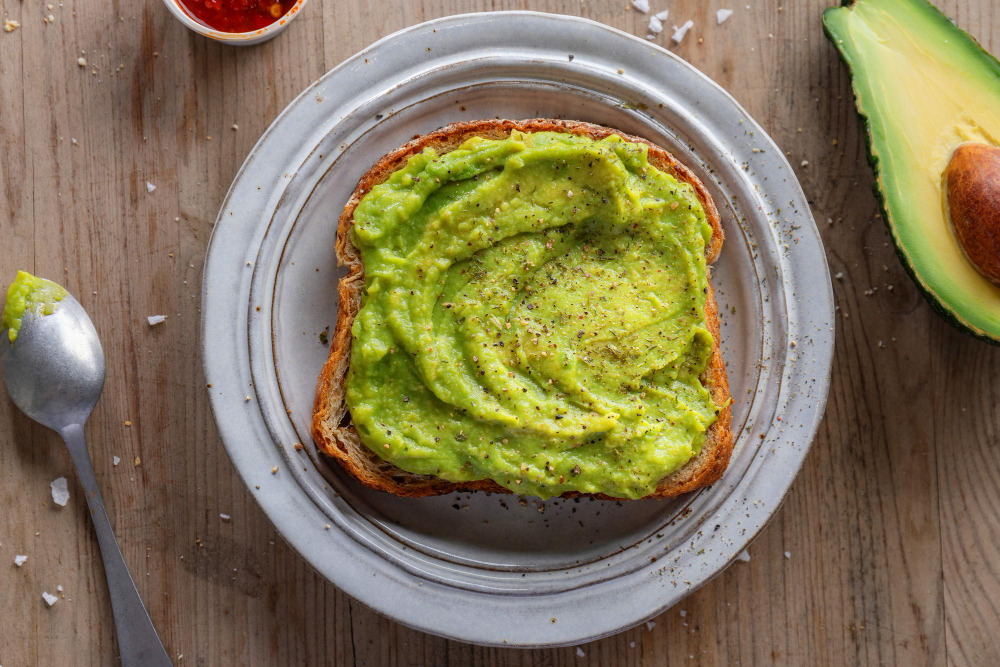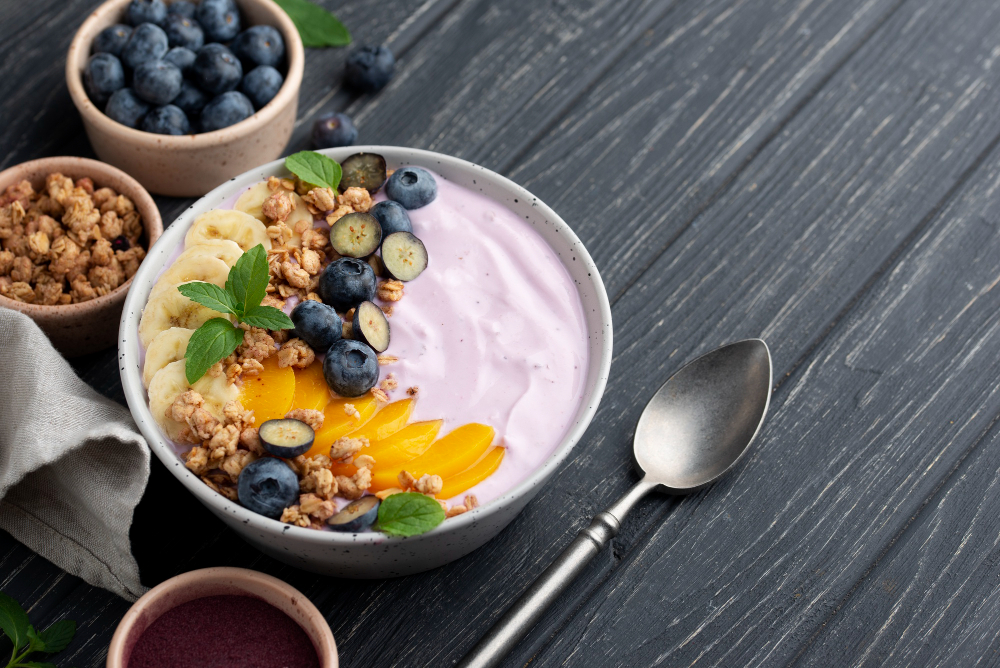Acai bowls have boomed tremendously. Acai berries cultivated in Central and South America are puréed and served as a smoothie in a bowl or tumbler, garnished with fruit, nuts, seeds, or granola. Acai bowls are hailed as an antioxidant-rich superfood because of their brilliant color, velvety texture, and adaptability. However, on the other side, the meal can be heavy in calories and added sugar, and some argue that it may be detrimental to one’s health.
Avocado toast is a sort of open-faced sandwich composed of bread topped with mashed avocado, salt, black pepper, and occasionally citrus juice.
Olive oil, hummus, red pepper flakes, feta, dukkah, and tomato are added to improve the flavor. In the 2010s, avocado toast became a popular cuisine trend. However, it has been on café menus at least since the 1990s.
As a result of avocado toast’s emergence as a fad, ordering avocado toast at a café has been criticized as a symbol of wasteful spending. This was also when people began comparing avocado toast to guacamole toast.
Avocados are indigenous to the Americas and presumably originated in central Mexico.
South Central Mexican pre-Columbian cultures have cultivated trees and fruit for approximately 9,000 years.
As a result, sliced or mashed avocado has been eaten on bread, flatbread, or tortilla (typically heated or toasted) since humans began ingesting avocados before the existence of written or recorded history. In several areas of the Americas, avocado toast for breakfast has become such a standard that it is neither documented nor necessary to document (e.g., in a recipe) such a simple spread over bread.
What Is Healthier Acai Bowl or Avocado Toast?
Based on sugar content and calories, it appears that avocado toast is the definite healthy winner in this toss-up.
A standard-sized acai bowl has between 50 and 100 grams of sugar and 350 to 600 calories, a long cry from the 3 to 4 grams of sugar, and around 350 calories in two slices of avocado on toast.
According to experts, added sugar should account for less than 10 percent of overall calorie consumption. However, reducing sugar intake to below 5 percent, or around 25 grams (6 teaspoons) per day, is suggested for extra health advantages.
A reasonably low-sugar acai bowl would, therefore, likely surpass the required daily sugar consumption by up to twice. For example, two pieces of sourdough with half an avocado contain around 3.5 grams of sugar. Compared to an acai bowl including bananas, mango, maple syrup, coconut water, frozen acai, and granola, this has up to 80g of sugar, which is more than 20 times the sugar level.
Undoubtedly, avocados are heavy in fat, making them inherently high in calories. To dispel every fat-phobic diet myth, however, a modest amount of fat is a perfectly healthy component of a whole-foods diet.
Due to their ability to block the flow of food from the stomach, meals heavy in fat (as well as fiber) can help you feel full and content. This often makes you feel fuller for longer, resulting in longer intervals between meals and eventually fewer calories.
Is Acai Bowl a Healthy Breakfast?
Acai berries are high in sugar and may not be the best for people with diabetes. However, it’s still fruit, and fruit always offers more than its natural sugar content. Depending on the ingredients utilized, the nutritional value of your acai bowl varies. Despite this, most bowls are rich in fiber, antioxidants, and minerals such as vitamin C, manganese, and potassium. Depending on the toppings you choose, however, commercial variations may have up to 600 calories and 75 grams of sugar per serving. Acai bowls typically contain various fruits, such as strawberries, blueberries, and bananas, in addition to acai berries.
Acai berries are an excellent source of vitamin C and manganese, which both work as antioxidants that protect your cells from oxidative damage produced by free radicals.
In addition, they are rich in potassium, an essential vitamin that regulates blood pressure and protects against age-related bone loss and kidney stones.
Is Avocado on Toast Good for Weight Loss?

It can be good for weight loss. Avocado Toast has become a trendy health food trend in the United States. In avocado toast dishes, butter and other harmful spreads are substituted with natural, ripe avocados. Avocados, when mashed, spread similarly to butter but are a far healthier option. A piece of bread topped with avocados has much more health advantages than breakfast or a snack from a fast-food restaurant.
Avocados have several advantages. In particular, they provide the healthful fats your body needs. For example, did you know that 75 percent of a medium avocado is composed of monounsaturated fats? According to the American Heart Association, these good fats can lower harmful cholesterol levels and lessen the chance of developing heart disease.
Avocados contain over twenty minerals and vitamins and are rich in fiber. In addition to 10 grams of fiber, they include B-vitamins, Vitamin C, potassium, and magnesium, to mention a few! Due to the high levels of beneficial fats and fiber in avocados, an average amount of avocado toast contains the ideal number of calories to leave you satisfied, but not so.
It is well known that fiber aids digestion and promotes weight reduction. Therefore, incorporating avocado toast into your diet and a healthy lifestyle and exercise may be beneficial if you attempt to lose weight.
Is Acai Bowls Good for Weight Loss?
Acai bowls can be made in such a way that they can support weight loss efforts. Make them by hand! Thus, you will know precisely what you are consuming and may create your bowl according to your dietary preferences. Here are my best recommendations for revamping your breakfast bowl:
- Add some healthy fats, such as avocado or nut butter, to the mixture to decrease sugar absorption into the circulation. With a small amount of additional fat, you will likely feel fuller for longer and be able to prevent blood sugar falls and the subsequent hunger that follows.
- Include some fiber as well. For example, a spoonful of oats or a sprinkling of psyllium husk may boost your sense of fullness and give your intestines a little TLC.
- Provide plenty of protein. Add some chia seeds, yogurt, or natural protein powder to reduce the glycemic load and aid in stabilizing blood sugar.
- Sub out some fruit for vegetables. Consider substituting a serving of fruit with frozen zucchini, spinach, or cucumber. You’ll be pleasantly surprised by how much the fruit conceals the flavor of the vegetables.
- Coconut water is preferable to apple juice.
- Finally, substitute stevia for maple syrup, honey, and other sweeteners. This will reduce the sugar content without diminishing the sweetness.

